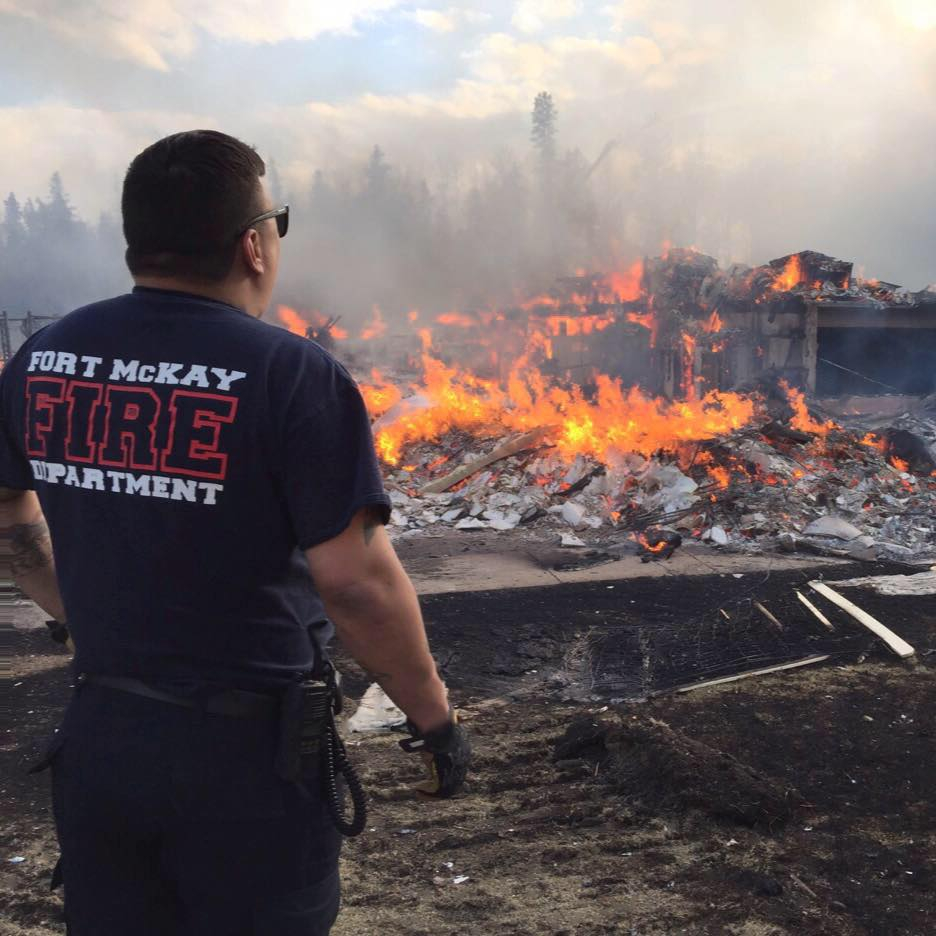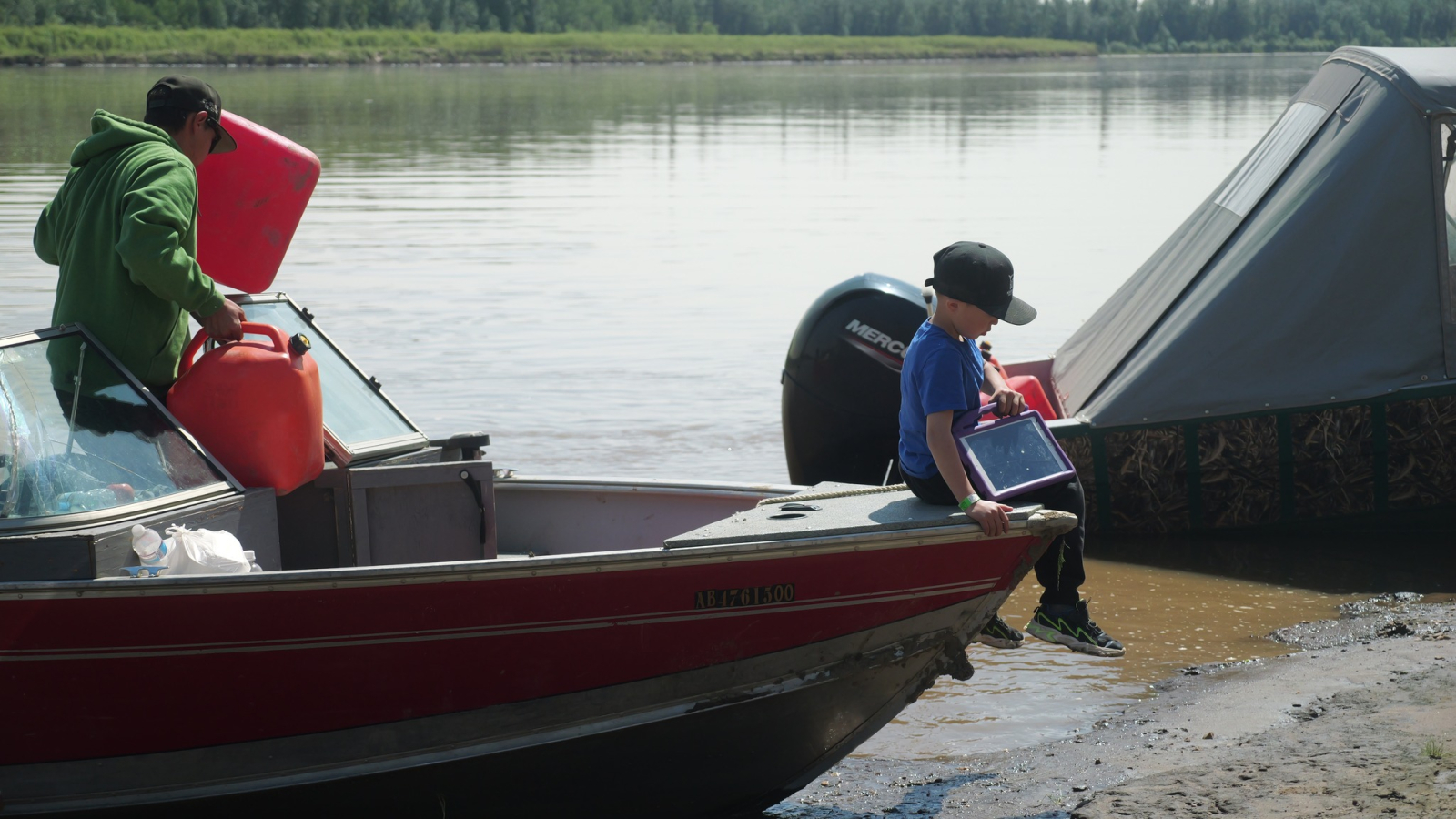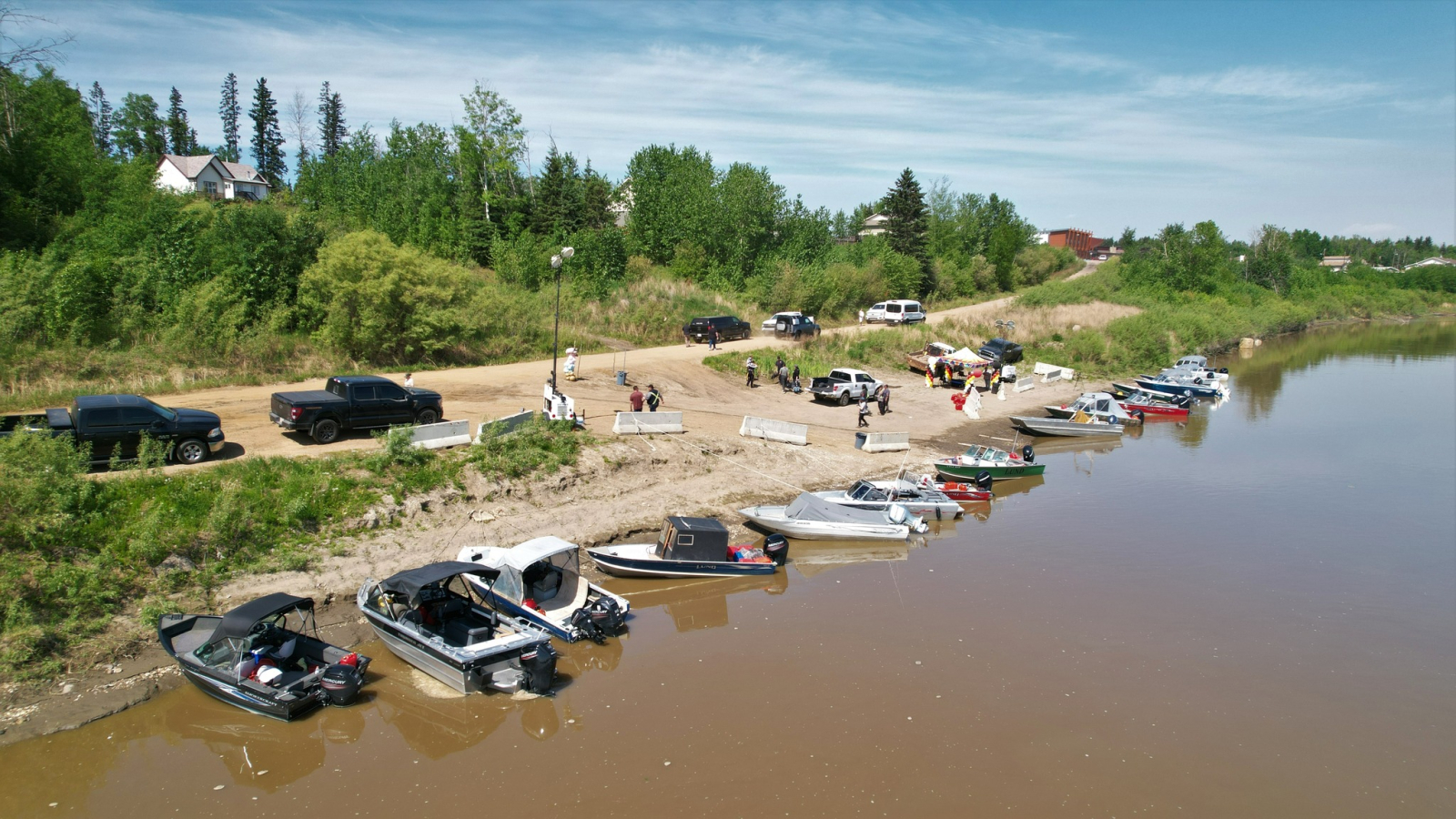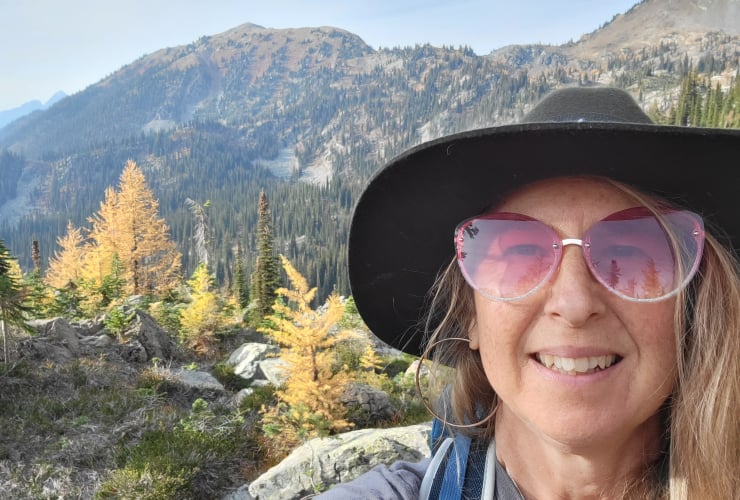Support journalism that lights the way through the climate crisis
The mere smell of smoke sends Ron Quintal’s pulse racing. As soon as the signature campfire scent hits his nose, he feels compelled to walk the perimeter of his home and scan the surrounding landscape, looking for its source.
Ever since fighting “The Beast” — a massive system of wildfires that devastated Fort McMurray and swept through northern Alberta in 2016 — Quintal says his “anxiety level goes from zero to 100 in a matter of minutes” at that telltale warning sign.
Quintal is well acquainted with crises. He has been president of the Fort McKay Métis Nation since 2005 and has over 20 years of experience fighting fires in the region.
When The Beast hit, Quintal said, he spent eight days battling the fires “head-on.” “The day that Fort McMurray was evacuated … I didn't sleep for 36 hours because we were busy fighting fire,” the 44-year-old recalled.

Quintal was deputy fire chief with the Fort McKay Fire Department during the 2016 fires, which forced over 90,000 people to evacuate, burned almost 580,000 hectares of land — seven times the area of Calgary — and destroyed 2,400 homes and businesses.
With Canada facing an unprecedented wildfire season, communities across the country are experiencing similar emergencies, some for the first time. Climate change — largely driven by humans burning oil, coal and gas — is creating hot, dry conditions more frequently, potentially setting the stage for more and larger fires this summer and in the years to come. Wildfires have already burned 3.3 million hectares of land across the country this year, which the federal government says is “10 times” the normal area at this point in the fire season.
“In the last 15 years … we've been evacuated three times for forest fires,” Quintal told Canada’s National Observer in a phone interview. “Emergencies, for us, are things that we've learned to manage very well.
“I think that we had no choice,” said Quintal.
When an evacuation order was issued on May 30 for the community of Fort Chipewyan, located almost 300 kilometres upstream, the Fort McKay Métis Nation and Fort McKay First Nation were ready to spring into action. Situated on Lake Athabasca, Fort Chipewyan is only accessible by boat or plane. There is a winter road, but that’s of no use during the spring, summer and fall.

“Right off the hop,” three safety boats stocked with medical supplies, fuel, food and water were sent upstream to assist evacuees: one boat went all the way to Fort Chip, and the other two positioned themselves downriver to help people on the hours-long journey, said Quintal. The evacuation order for Fort Chipewyan includes the Mikisew Cree First Nation, Fort Chipewyan Métis Nation and Athabasca Chipewyan First Nation.

Evacuation by boat is “a treacherous trip, to say the least,” he added. In some areas, the smoke was so thick that he couldn't see more than 15 or 20 feet ahead of you; at other points, “maybe 100 yards,” which posed a problem for navigating around large sticks carried by the strong current.
At least three families tied their boats off to the shore and hunkered down under a tarp for the night as darkness fell because poor visibility meant they couldn’t navigate the river, Quintal said.
Within four or five hours, an evacuation point was set up in Fort McKay with more supplies for the incoming boaters and speedily erected barriers for people to tie their boats. People monitored the boats 24/7 to give evacuees some peace of mind, said Quintal. The first boats arrived at seven o’clock on Tuesday, May 30, and continued for the next three days. Fort McKay Métis Nation and Fort McKay First Nation kept things organized with a registration post and arranged for transportation to Fort McMurray, about 60 kilometres downstream.
Relationships with surrounding oilsands operators (like impact benefit agreements and business arrangements) are a big part of the success of Fort McKay’s disaster management, Quintal said. “It's a bit of a double-edged sword” because those resources are so important to the community’s ability to handle situations like this, and they likely wouldn’t be able to fund their own disaster management without it.
On the other hand, oilsands production drives climate change and the presence of industry means the community is “used to being on alert” for everything from toxic tailings leaks to hydrogen sulfide leaks: a poisonous, corrosive and flammable gas found during the drilling and production of crude oil and natural gas.
Fort McKay is able to persevere and protect the health and safety of community members both because of and in spite of industry.
Wildfires don’t just leave scars on the land. They are “emotionally scarring” for the people affected, he said.
The first concern is getting your family out, but once in a safe place, the worries are endless. The fate of your home, workplace, beloved pets, children’s school and more floods your mind, he said.
Quintal has contacts in the region he can reach out to for more information at the first smell of smoke.
“Your everyday person who's had to face these anxieties doesn't have access to that, and nine times out of 10, they depend on social media to get their updates,” said Quintal. “For me, being a leader, I get anxiety; I can't even imagine what your everyday citizen goes through.”
Reflecting on all the disasters he’s dealt with, Quintal says pure adrenaline marked his first evacuation experience and years directly fighting the fires. Now, almost 20 years later, he emphasized the importance of an overlooked disaster skill: empathy.
You have to be a calm, reliable person and give people the company and comfort they need “because they're going through something that's terrifying that, in a lot of circumstances, they've never experienced, they've never lived through,” he said.
Natasha Bulowski / Local Journalism Initiative / Canada’s National Observer
Updates and corrections
| Corrections policyThis article has been updated to include a section that was unintentionally omitted from the original article. We regret the error.
As written, this makes no
As written, this makes no sense. The writer has the river running the wrong way. The Athabasca River runs from Fort McMurray to Fort McKay and then to Fort Chipewan.
"Fort McKay is able to
"Fort McKay is able to persevere and protect the health and safety of community members both because of and in spite of industry."
In reality, Fort McKay is completely unable to protect the health and safety of its members. Oilsands money does not protect indigenous communities on the frontlines of "development".
"Since November 2011, water has been delivered to each and every home in Fort McKay after the community realized they had been drinking water with high levels of the carcinogenic chemicals, trihalomethanes and haloacetic acids. Many people complain of rashes and sores from showering in the water.
"Cancer, miscarriage and respiratory illnesses are frequently reported in Fort McKay. Many believe industry is to blame."
"It devours our land" (The Narwhal, 2018)
"How Alberta kept Fort McKay First Nation in the dark about a toxic cloud from the oilsands" (National Observer, 2019)
"As the chemicals inched towards the town, AER staff clashed over whether they should warn the community, say insiders interviewed by the investigation.
"…(At that time) there really was no human health risk-based decision-making at the regulator. It was either you killed someone or you didn't."
"The community relies on bottled water, and some residents complain of skin rashes after taking showers.
"...If you stand on the riverbank in Fort McKay and look south to the horizon, you can see huge emission stacks belching murky clouds. There is a sour smell in the air. Some formerly white older houses on the reserve have a pale yellowy coat. Inside the houses a fine dust settles on everything day after day.
Sometimes the smell outside is so strong, residents stay indoors."
"First Nations bear the risks of oilsands development" (Toronto Star, 2015)
"Leo Gabriel Desjarlais, a hunter and trapper in Fort McKay, struggles to describe what it smells like when fumes from the oil sand operations blow into the community.
"'Sometimes it smells like horse [bleep],' he said. 'Sometimes it smells like burnt plastic.'
"Whenever the air smells like that he shuts the windows and stays inside.
"'I won't go outside because you can feel it in your nostrils. It's really strong.'
"Desjarlais worries about the impact of the fumes on the health of the community's most vulnerable.
"'I try not to think about it. The only thing that worries me is how this affects my grandkids and the kids around here.'"
"Leaders vow to tackle Fort McKay air quality, odour complaints" (CBC, 2016)
Jean L'Hommecourt, a Denesuline woman who lives just out of Fort McKay says "she and others in her community have simply gotten used to the constant smell of the tailings, the stinging eyes and burning throats. Her community, Fort McKay, is essentially surrounded by the ponds.
"'It's indescribable, I guess, because it smells like gases, it smells like chemicals. When you breathe it in, it kind of permeates through your nose and you can even have that taste in your mouth.'
"The fish isn't good to eat and the water isn't good to drink, she says. She worries about the impact on moose who graze by the river's edge and how they might pass along any contaminants when they're eaten.
"Elders have to travel far to conduct land-based teaching, according to L'Hommecourt. Everything from harvesting to fishing to traplines are affected. The traditional territories have been leased and ripped up and made inaccessible.
"…L'Hommecourt says First Nations were not consulted when the oilsands were first developed and it's only recently, now that the damage is done, that companies come calling.
"Ponds of toxic waste in Alberta's oilsands are bigger than Vancouver — and growing" (The Narwhal, 2022)
"I met FMFN Chief Jim Boucher in his impeccable corner office in the center of town, lined with windows overlooking the river. From where we sat, Boucher pointed to a forested hill in the distance where he had lived as a child, back when there were no roads or electricity, the river water was drinkable, and everyone lived off the land…
"Before long, people began to notice the changes: something was wrong with the fish, which tasted of oil; the snow they melted in wintertime for drinking water was now covered in soot; and the river water made people sick. The community spoke out about the destruction but was ignored."
"How First Nations in Canada Are Winning the Fight Against Big Oil" (The Nation, 2014)
*
"Currently, elders like Bernadette L'Acorde say they can't hunt and fish in the vicinity of Fort MacKay because of concerns about contamination from the neighbouring oilsands sites.
"'We used to hunt and fish. But not anymore. [The land] is all poisoned.'"
"Métis community in oilsands buys 'pristine' land to hunt and trap" (CBC, 2018)
As the article fails to note,
As the article fails to note, Ron Quintal, president of Fort McKay Métis, is a strong supporter of the oilsands industry.
Fort McKay and Fort Chip are reaping the "rewards" of oilsands "development"
"Imperial, McKay Metis sign long-term oilsands benefits agreement" (JWN Energy, 2018)
"The McKay Metis say a new deal with Imperial Oil 'demonstrates that responsible oilsands development can be achieved by focusing on common goals.'
"'This is an important agreement for our community,' McKay Metis president Ron Quintal said in the statement.
"'The McKay Metis are satisfied that Imperial's Kearl and proposed Aspen projects are environmentally sound and will provide significant economic benefit. We look forward to collaborating on environmental oversight…This is one of the biggest successes to date for my community; one that proves what Metis people and communities can achieve when there is a vision and the will to drive prosperity.'"
"[Ron Quintal, president of Fort McKay Métis] said not being invited to the news conference was especially frustrating since people from his community breathe the same air as the nearby First Nation and have complained about the impact of oilsands operations on the air quality for many years.
"'We were excluded from something that affects us so near and dear to the core of our community's health,' he said.
"Fort McKay Métis feeling 'forgotten' by Alberta government" (CBC, 2016)
"‘Disappointment, fear and anger': Indigenous communities blindsided by Teck's decision to pull Frontier project" (Financial Post, 2020)
"14 Indigenous communities lost out on potential jobs and benefits agreements with Teck for the project
"The decision left Indigenous communities, competing oil and gas companies and the broader Alberta business community grappling with 'disappointment, fear and anger' on Monday morning, as the decision reverberated through the province, Quintal said.
"… 'They’re a Canadian-based company that did everything right. If one of our own can’t get a project built, then who can?' Quintal said, adding that the cancellation should cause deep introspection across the country."
"Indigenous leaders say Keystone cancellation a worrying sign for oilsands" (Fort McMurray Today, 2021)
“It almost appears this project was cursed,” said Ron Quintal, president of the Fort McKay Métis Nation. “It’s absolutely frustrating.”






Comments